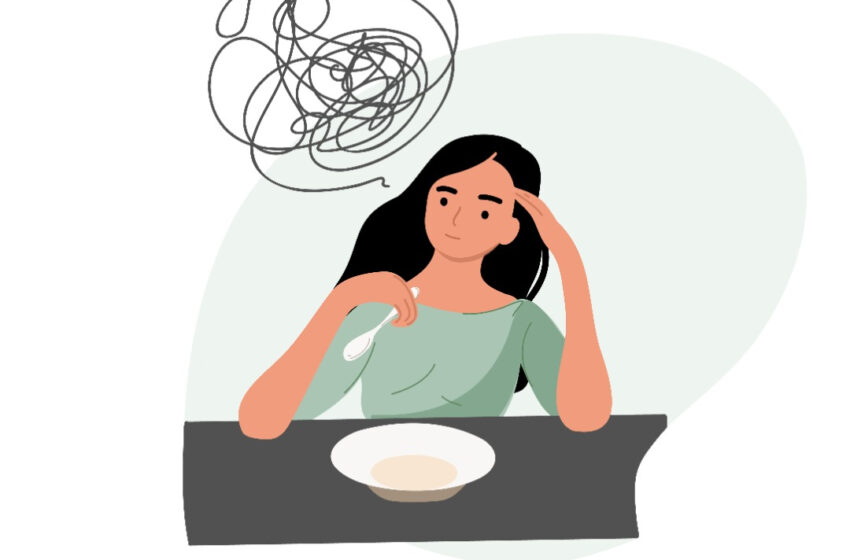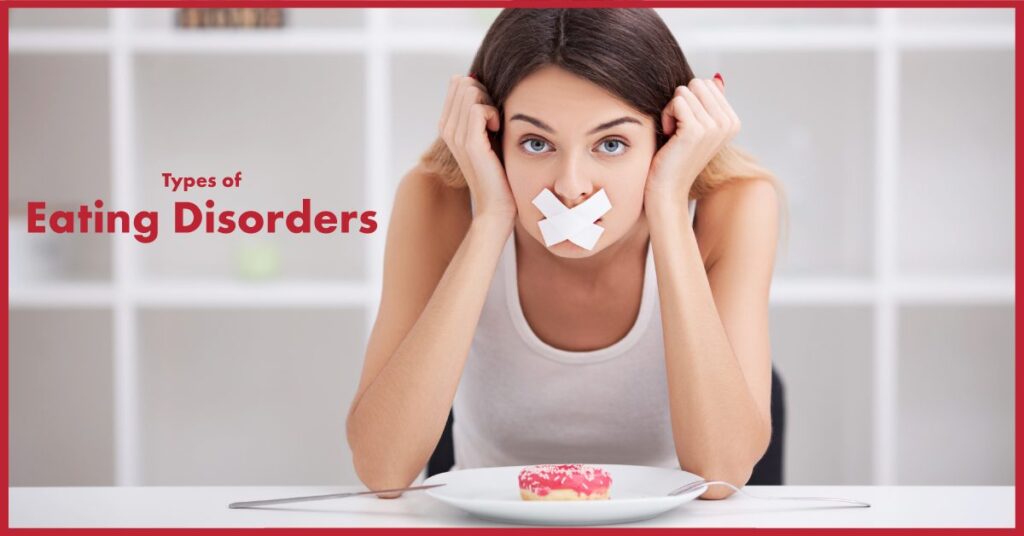Symptoms Of Eating Disorder – Types, Signs, Treatment

Symptoms of eating disorder
Eating disorders – The mental health conditions characterized by abnormal eating behaviors that can have severe physical and psychological consequences. These disorders affect people of all ages, genders, and backgrounds. Today, we will talk about the different types of eating disorders and their treatments. So, if you are someone who is suffering from the same or has a keen interest in knowing more about this medical situation, then be here till the end.
Well, when it comes to talking about some common physical signs. Then the list includes significant weight loss, hair loss, and a frail appearance in individuals with anorexia nervosa. For those with bulimia nervosa, evidence of repeated episodes of vomiting or laxative use may be visible, along with signs of tooth decay and throat irritation due to frequent purging. The binge-eating disorder may manifest through rapid weight gain and fluctuations, often leading to obesity. Scroll on to learn more information on the topic.
What Is An Eating Disorder?
Eating disorders are serious mental health conditions that affect a person’s relationship with food, eating, and their own body. These disorders can have harmful effects on a person’s physical and emotional well-being. There are different types of eating disorders, but the most common ones are anorexia nervosa, bulimia nervosa, and binge-eating disorder. In medical language, anorexia nervosa is when a person restricts their food intake, often to the point of becoming dangerously thin, because they have a distorted body image and a fear of gaining weight. Bulimia nervosa involves episodes of overeating, followed by purging through methods like vomiting or excessive exercise. Binge-eating disorder is characterized by recurring episodes of eating large amounts of food, often quickly and to the point of discomfort, without purging. People eating disorders during his/her mental disturbance.
Signs Of An Eating Disorder!
If you think someone might have an eating disorder, there are signs to look for. They may start losing weight very fast or talk a lot about food and diets. They might skip meals or eat secretly. People with eating disorders often have a bad body image and may wear baggy clothes to hide their bodies. They may also be very tired or have problems with their teeth from throwing up a lot.
Types Of Eating Disorder

Well, here are some key types of eating disorders that will help you understand the problem!
- Anorexia Nervosa: Anorexia nervosa is perhaps the most well-known eating disorder. Individuals with this condition exhibit a relentless pursuit of extreme thinness, often through self-imposed starvation and excessive exercise. They have an intense fear of gaining weight, despite being significantly underweight. Anorexia can lead to severe health issues, such as heart problems, bone loss, and cognitive impairments.
- Bulimia Nervosa: Bulimia nervosa involves episodes of binge eating followed by compensatory behaviors, such as self-induced vomiting, laxative use, or excessive exercise. People with bulimia are typically of normal weight, making it harder to detect. The constant cycle of overeating and purging can damage the gastrointestinal system and affect overall health.
- Binge-Eating Disorder: Binge-eating disorder is characterized by recurrent episodes of consuming large amounts of food without compensatory behaviors. Those with this disorder often feel a loss of control during binges and may experience shame and guilt afterward. Binge-eating disorder can lead to obesity and related health problems, such as diabetes and heart disease.
Eating Disorder Treatment
Treating eating disorders requires a multidisciplinary approach involving medical, nutritional, and psychological interventions. Here are some common treatment options:
- Psychotherapy: Cognitive-behavioral therapy (CBT) is widely used to treat eating disorders. It helps individuals recognize and change negative thought patterns and behaviors related to food and body image. Other forms of therapy, such as interpersonal therapy and dialectical behavior therapy, can also be beneficial.
- Medical and Nutritional Support: Medical professionals may address the physical consequences of eating disorders, such as electrolyte imbalances, malnutrition, and cardiac issues. Nutritional counseling can help individuals establish healthy eating habits and restore a balanced diet.
- Medications: In some cases, medications like antidepressants, antipsychotics, or mood stabilizers may be prescribed to address co-occurring mental health conditions or to help manage symptoms like anxiety and depression.
- Support Groups: Participating in support groups can provide a sense of community and understanding for those with eating disorders. Sharing experiences and strategies for recovery can be invaluable.
- Inpatient or Residential Treatment: Severe cases of eating disorders may require hospitalization or residential treatment. These programs provide intensive, around-the-clock care, including medical monitoring, therapy, and structured meal plans.
- Family-Based Treatment: For adolescents with eating disorders, family-based treatment (FBT) is often recommended. This approach involves parents actively participating in their child’s recovery, helping to support and monitor their progress.
Lastly, we can say that eating disorders are illnesses that affect how people think about food and their bodies. There are different types of eating disorders, and they can be serious. The most common ones are anorexia, bulimia, and binge-eating disorder. Anorexia makes people want to be very thin, so they eat very little. Bulimia is when someone eats a lot and then makes themselves throw up. Binge-eating disorder is eating a lot of food in a short time, but not throwing up.